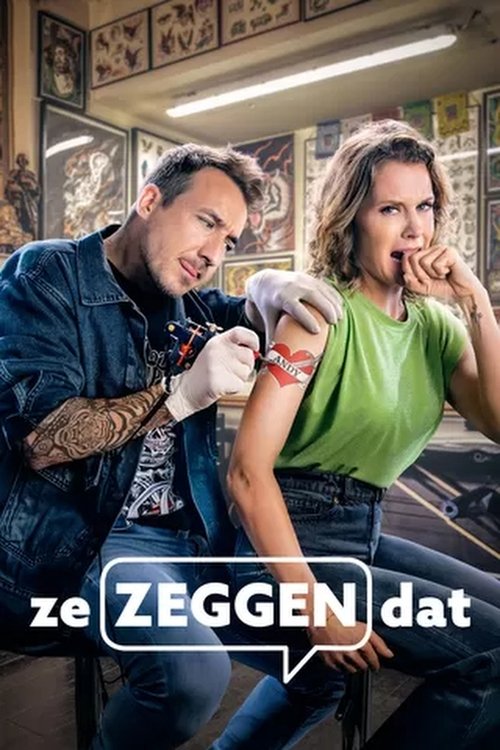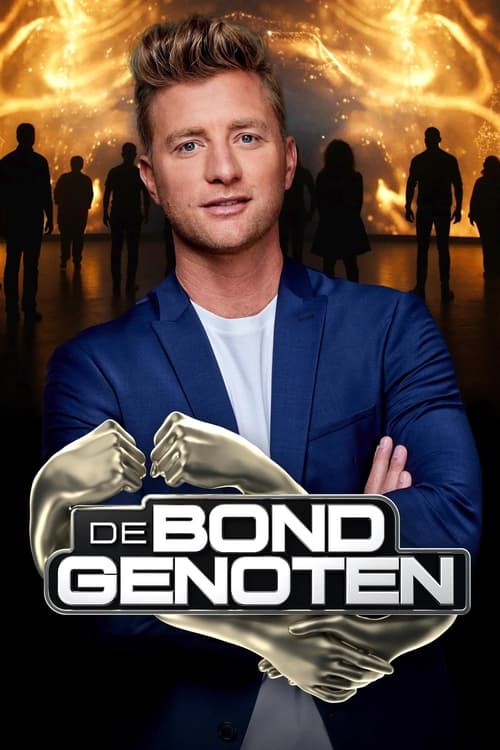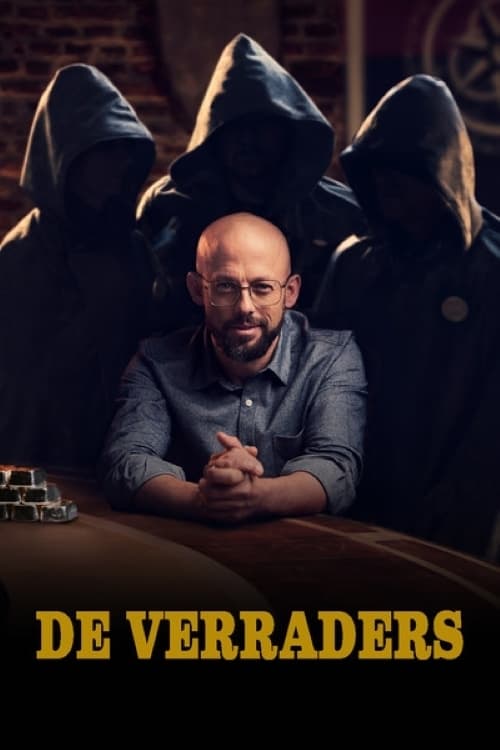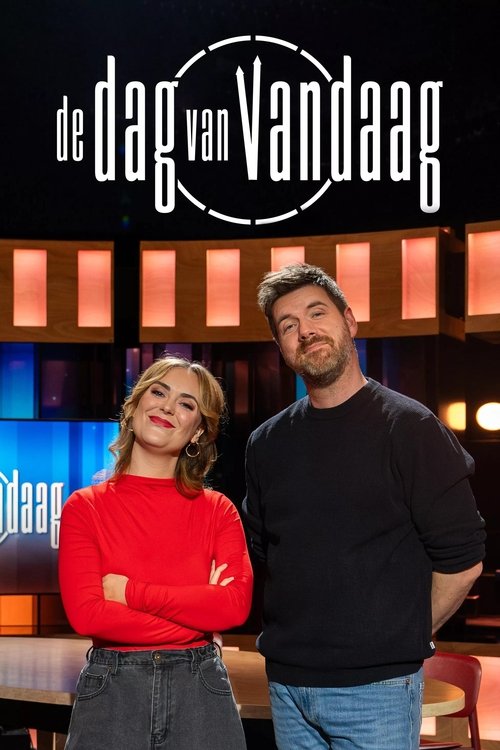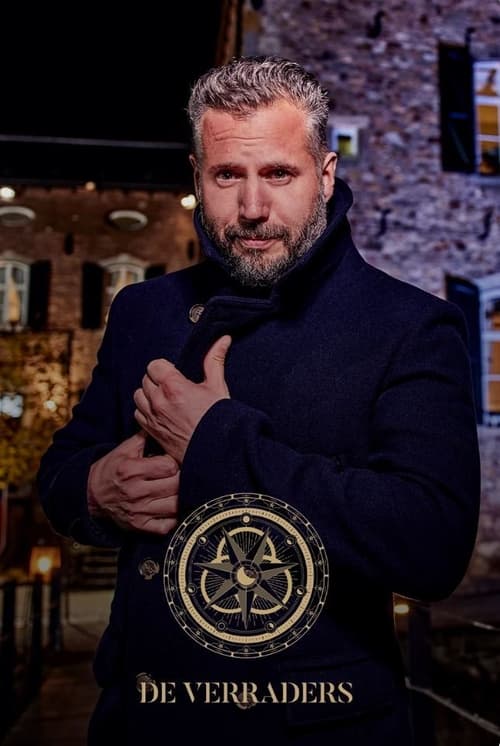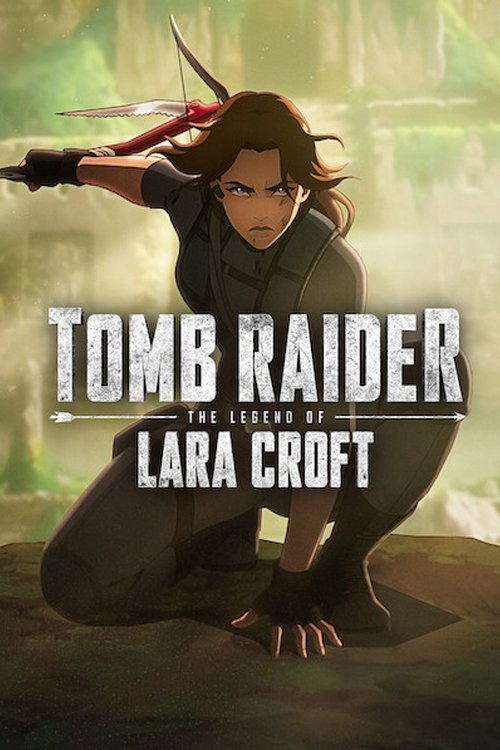
Ask Your Own Question
What is the plot?
In the opening scene of "Ze zeggen dat," we are introduced to the protagonist, Lotte, a young woman in her late twenties, who is struggling with the recent loss of her mother. The scene is set in a small, dimly lit apartment filled with remnants of her mother's life, including photographs and personal belongings. Lotte is seen going through her mother's things, her face a mixture of sadness and nostalgia. She finds a letter addressed to her, which hints at a family secret that her mother never revealed. This discovery ignites a sense of curiosity and urgency within Lotte.
As Lotte reads the letter, she learns about a family member she never knew existed, a distant uncle named Jan, who lives in a remote village. The letter suggests that Jan holds the key to understanding her mother's past. Driven by a need for closure and answers, Lotte decides to travel to the village. The transition to the village is marked by a scenic drive through lush countryside, contrasting with Lotte's emotional turmoil. The visuals capture her apprehension and determination as she approaches her destination.
Upon arriving in the village, Lotte is struck by its quaint charm but also feels an overwhelming sense of isolation. She checks into a small inn, where the innkeeper, an elderly woman named Greta, greets her with a warm smile but also a hint of curiosity about Lotte's purpose for visiting. Lotte's internal conflict is palpable as she grapples with her emotions and the weight of her family's history. She spends her first night in the village restless, haunted by memories of her mother and the unanswered questions that linger.
The next day, Lotte sets out to find Jan. She wanders through the village, asking locals about him, but most are hesitant to speak. This creates a sense of mystery and tension, as Lotte feels increasingly like an outsider. Eventually, she meets a young man named Tom, who is friendly and offers to help her locate Jan. Tom's easygoing nature provides a brief respite from Lotte's emotional burden, and she begins to open up to him about her quest.
Tom leads Lotte to Jan's home, a modest house on the outskirts of the village. When they arrive, Jan is initially reluctant to engage with Lotte, revealing a guarded demeanor. The tension in the room is thick as Lotte introduces herself and explains her connection to her mother. Jan's reaction is mixed; he is surprised but also wary, hinting at a complicated history with Lotte's mother. This moment is charged with unspoken emotions, and Lotte feels a mix of hope and frustration.
As the conversation unfolds, Jan reveals snippets of the past, including a family rift that led to his estrangement from Lotte's mother. He shares stories of their childhood, filled with both joy and pain, which resonate deeply with Lotte. However, Jan is reluctant to divulge the full truth, leading to a confrontation where Lotte demands answers. This pivotal moment showcases her determination to uncover the truth, and Jan, seeing her resolve, reluctantly agrees to share more.
In a series of flashbacks interspersed with the present, we see glimpses of Lotte's mother's life, her struggles, and the choices that led to her separation from Jan. These scenes are emotionally charged, revealing the complexities of family dynamics and the impact of past decisions. Lotte's emotional state shifts from anger to empathy as she begins to understand her mother's struggles.
As Lotte and Jan continue to talk, they uncover a shared pain that binds them together. Jan reveals a family secret that involves a betrayal that shattered their relationship. This revelation is a turning point for Lotte, as she realizes that her mother's life was not as simple as she had believed. The emotional weight of this moment is palpable, and Lotte's internal conflict deepens as she grapples with her newfound understanding.
The following day, Lotte decides to explore the village further, hoping to find more clues about her mother's past. She visits the local archives, where she discovers old photographs and documents that paint a fuller picture of her family's history. Each discovery brings a mix of emotions--sadness, anger, and a sense of connection to her roots. Lotte's determination to piece together her family's story intensifies, and she feels a growing bond with Jan.
As Lotte spends more time in the village, her relationship with Tom deepens. They share moments of laughter and vulnerability, and Lotte begins to let her guard down. However, she is still haunted by the weight of her family's secrets. Tom encourages her to confront her feelings, and they share a tender moment that hints at a budding romance. This emotional connection provides Lotte with a sense of hope amidst her turmoil.
The climax of the story occurs when Lotte confronts Jan one last time, demanding to know why he never reached out to her mother after their falling out. The confrontation is intense, filled with raw emotions as Jan reveals his regrets and the pain of losing his sister. Lotte's anger shifts to understanding, and she realizes that forgiveness is a crucial step in healing their fractured family. This moment is cathartic for both characters, as they begin to mend their relationship.
In the final act, Lotte decides to return to her mother's apartment, armed with the knowledge she has gained. She feels a sense of closure as she reflects on her mother's life and the choices that shaped her. The apartment, once a place of sorrow, now feels like a space of understanding and acceptance. Lotte begins to sort through her mother's belongings, finding peace in the memories and the legacy left behind.
The series concludes with Lotte standing at her mother's grave, a serene expression on her face. She places flowers on the grave, symbolizing her acceptance of the past and her commitment to moving forward. The final scene captures Lotte's emotional journey, showcasing her growth and the newfound strength she has gained through her quest for truth. The camera pans out, leaving Lotte in a moment of quiet reflection, embodying the themes of family, forgiveness, and the complexity of human relationships.
What is the ending?
In the ending of "Ze zeggen dat," the main characters confront their truths and the consequences of their choices. The story culminates in a tense confrontation that leads to revelations about their relationships and personal struggles. Each character faces a pivotal moment that defines their future, ultimately leading to a bittersweet resolution.
As the final episodes unfold, the atmosphere is thick with tension. The characters gather in a dimly lit room, the air heavy with unspoken words and unresolved conflicts. The protagonist, Emma, stands at the center, her heart racing as she prepares to confront her past. She has been grappling with feelings of betrayal and loss, and this moment is her chance to reclaim her narrative.
Scene by scene, the tension escalates. Emma's best friend, Lotte, enters the room, her expression a mix of guilt and determination. Lotte has been hiding a secret that could shatter their friendship, and as she takes a deep breath, the weight of her decision hangs in the air. The camera captures the flicker of doubt in her eyes, reflecting her internal struggle.
As Lotte reveals her truth, the room falls silent. Emma's face contorts with a mix of anger and hurt, her voice trembling as she processes the betrayal. The emotional stakes are high, and the audience can feel the palpable pain of their fractured bond. Lotte pleads for understanding, her voice cracking as she explains her motivations, revealing her own vulnerabilities and fears.
Meanwhile, the character of Joris, who has been a silent observer, steps forward. He has been wrestling with his own demons, and this confrontation forces him to confront his feelings for both women. His internal conflict is evident as he shifts uncomfortably, torn between loyalty and love. The camera zooms in on his face, capturing the turmoil within him as he grapples with the implications of their revelations.
As the confrontation reaches its peak, emotions boil over. Emma, feeling betrayed and vulnerable, lashes out, her words sharp and cutting. Lotte, hurt but resolute, stands her ground, and Joris finds himself caught in the crossfire. The scene is charged with raw emotion, each character's pain laid bare as they navigate the complexities of their relationships.
In the aftermath of the confrontation, the characters begin to process what has transpired. Emma, feeling a mix of anger and sadness, decides to take a step back from both Lotte and Joris. She needs time to heal and reflect on her own identity, separate from the chaos of their intertwined lives. The camera follows her as she walks away, the weight of her decision evident in her posture.
Lotte, left standing in the room, feels the sting of loss. She realizes that her actions have consequences, and the friendship she valued may never be the same. The scene lingers on her face, capturing the regret and sorrow that wash over her as she contemplates her choices.
Joris, now alone, is left to ponder his role in the unfolding drama. He understands that he must confront his own feelings and take responsibility for the part he played in the conflict. The final shot of him shows a man deep in thought, the shadows of the room reflecting the uncertainty of his future.
As the credits roll, the audience is left with a sense of unresolved tension. Each character has faced their truths, but the path forward remains unclear. The ending emphasizes the complexity of human relationships, the fragility of trust, and the importance of self-discovery. The fates of Emma, Lotte, and Joris are intertwined, yet each must navigate their own journey towards healing and understanding.
Is there a post-credit scene?
In the TV show "Ze zeggen dat," produced in 2020, there is indeed a post-credit scene that adds an intriguing layer to the narrative.
As the credits roll, the screen fades to black before transitioning to a dimly lit café, where the atmosphere is thick with tension. The camera pans slowly across the room, revealing a few scattered patrons, their conversations hushed. The focus sharpens on a corner table where two characters, previously seen in the series, are engaged in a heated discussion.
One of them, a woman with a determined expression, leans forward, her voice barely above a whisper. "We can't let them find out what we know," she insists, her eyes darting around the room as if expecting someone to overhear. The other character, a man with a troubled look, nods but seems conflicted, his fingers tapping nervously on the table.
The scene captures the weight of their secret, hinting at a larger conspiracy that has been brewing beneath the surface throughout the series. The tension escalates as the woman pulls out a small, folded piece of paper from her pocket, sliding it across the table. "This is just the beginning," she says, her voice steady but laced with urgency.
As the camera zooms in on the paper, the screen fades to black again, leaving viewers with a sense of foreboding and anticipation for what might come next. The post-credit scene effectively ties back to the central themes of secrecy and betrayal, leaving the audience eager for a potential continuation of the story.
What are the key events that lead to the climax of the series?
The climax is reached when Lotte discovers a hidden diary belonging to her father, revealing shocking secrets that connect her family to a larger conspiracy. This revelation forces her to confront not only her father's choices but also the implications of those choices on her own identity and future.
What motivates the main character, Lotte, throughout the series?
Lotte is driven by a deep desire to uncover the truth about her family's past, particularly the mysterious circumstances surrounding her father's disappearance. This quest for understanding leads her to confront her own fears and insecurities, as she grapples with the emotional weight of her family's secrets.
How does the relationship between Lotte and her mother evolve over the course of the series?
Initially, Lotte's relationship with her mother is strained, marked by tension and unspoken resentment. As Lotte delves deeper into her father's past, her mother becomes more open about her own experiences and regrets, leading to moments of vulnerability that ultimately strengthen their bond.
What role does the character of Joris play in Lotte's journey?
Joris serves as both a confidant and a catalyst for Lotte's transformation. His unwavering support encourages her to confront difficult truths, while his own struggles with loyalty and betrayal add complexity to their relationship, forcing Lotte to navigate her feelings of trust and love.
How does the setting influence the characters' actions and decisions in the series?
The series is set against the backdrop of a small, tightly-knit community where everyone knows each other's business. This setting amplifies the characters' sense of isolation and pressure, as Lotte feels the weight of societal expectations while trying to forge her own path amidst the secrets that bind her family.
Is this family friendly?
"Ze zeggen dat," produced in 2020, is a drama that explores complex themes and emotional narratives. While it does not contain explicit content, there are several aspects that may be considered objectionable or upsetting for children or sensitive viewers:
-
Emotional Turmoil: The show delves into deep emotional struggles, including themes of loss, betrayal, and familial conflict, which may be intense for younger audiences.
-
Conflict and Tension: There are scenes of heated arguments and confrontations between characters that may be distressing, showcasing the breakdown of relationships.
-
Mental Health Themes: The series touches on issues related to mental health, including anxiety and depression, which could be triggering for some viewers.
-
Dramatic Situations: Characters face challenging life situations that may involve moral dilemmas or ethical questions, potentially leading to discomfort.
-
Subtle References to Trauma: There are hints at past traumas that affect character behavior and relationships, which may be difficult for sensitive viewers to process.
Overall, while "Ze zeggen dat" is not overtly inappropriate, its emotional depth and thematic content may require parental discretion for younger viewers.

